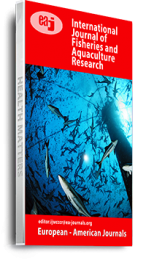Malaria is caused by the Plasmodium parasite, which is transmitted by female Anopheles mosquitoes. There are five Plasmodium species that cause disease in humans; however, the most important species in terms of disease burden are Plasmodium falciparum, which is prevalent in sub-Saharan Africa, and Plasmodium vivax, which is more common in Asia and South America. There were an estimated 219 million malaria cases and 435,000 deaths worldwide due to malaria in 2017; Sub-Saharan Africa carries a disproportionately high share of the malaria burden, with 92% of cases and 93% of malaria deaths in 2017. As well as direct effects on health, malaria is a major cause of poverty and underdevelopment in many countries, due to household and health system costs, absenteeism from school or work, reduced productivity, and premature death. The objectives of this review are to bring to the fore, “the use of larvivorous fish species (that is, fish that eats mosquito larvae, e.g. tilapias and others) to control malaria transmission in Africa. A handful of research works provide evidence that larvivorous fish species can decrease immature mosquito populations in defined water bodies altering mosquitos’ metamorphosis. This is not surprising as we know a lot of fish species eat larvae, and this can reduce the proliferation of mosquitos’ population and malaria occurrences. It is highly recommended that, the Federal Government of Nigeria (FGN) and the African Union (AU) should embark on a national and regional Malaria Control Using Biological Method (MCUBM) of Larvivorous Fish Species (especially Cichlids, they are found in almost every ecosystems). We all know that the Synthetic Drug Method of Controlling Malaria has not yielded much results, as millions of people (expectant mothers, infants, young ones, adults and the aged/olds) still die of malaria in Africa. Therefore, it is high time we applied this method just like the Kenyan Government tried it; believe me, it will work because mosquitos are always in the increase during the raining season and malaria patients are more during this period. The fish species will equally bridge the protein demand of some Africans in no distance time.
Keywords: Aquatic Ecosystem, Malaria, Prevention, Transmission, fish species, larvae

